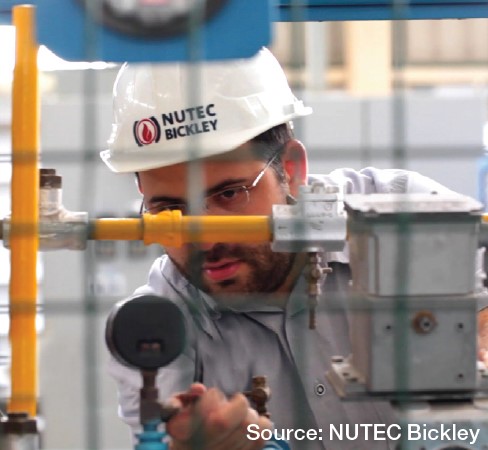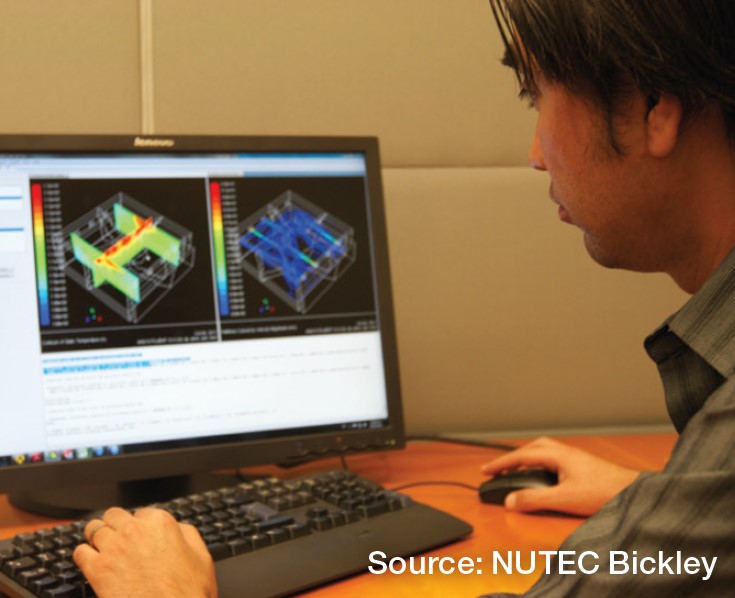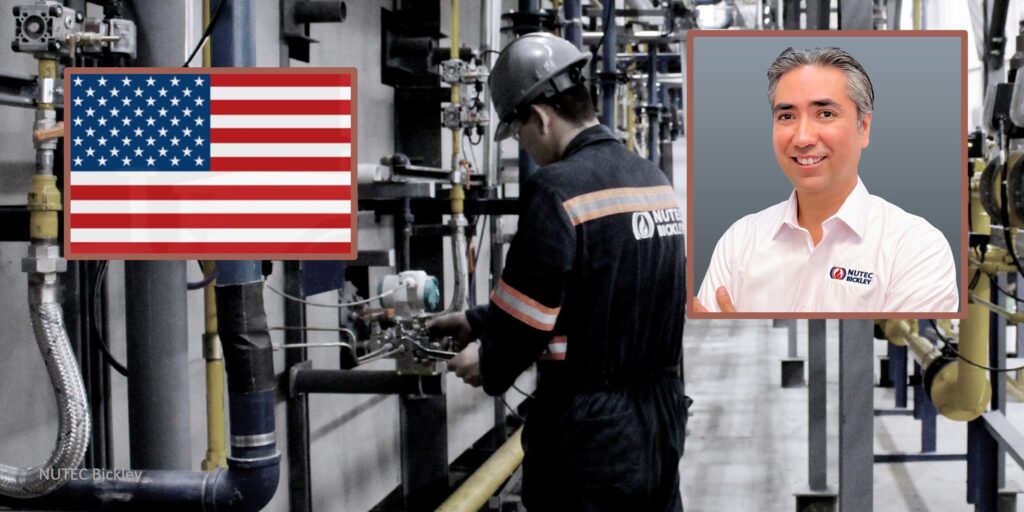Poor energy efficiency in industrial furnaces usually impacts companies’ production costs since more energy consumption is required to achieve the desired temperature. This, in turn, has a tangible impact on their carbon emission footprint. In this Technical Tuesday by Alberto Cantú, VP of Sales at NUTEC Bickley, learn energy-saving solutions for industrial furnaces.
This article was originally published in Heat Treat Today’s May 2024 Sustainable Heat Treat Technologies 2024 print edition.
To read the article in Spanish, click here.
According to the International Energy Agency, the industrial sector is one of the main culprits when it comes to global energy consumption. In many situations, industrial furnaces tend to be the pieces of equipment that consume the most energy.
In this article, we will share a series of solutions you can implement to improve energy efficiency, reduce production costs, and be socially and environmentally responsible.
Factors that May Be Affecting Your Energy Efficiency
There are a couple of obvious factors that may be harming your energy efficiency ratings.
Heat Losses in the Furnace Process
These may be due to structural damage to the insulation or incorrect gas flow distribution inside the furnace.
Inefficient Combustion Processes


Inefficiencies here are probably due to inadequate or excessive air/fuel ratios or poor mixture caused by internal damage to the burner.
Some tips we can pass on to help you improve furnace energy savings are:
- Monitor the temperature on the cold side of the furnace, carefully checking that there are no hot spots.
- Periodically analyze the composition of the furnace combustion gases, ensuring you are maintaining the expected levels of oxygen and CO.
- Periodically check that the combustion air and fuel flows are in a stoichiometric ratio.
- Check at least twice a year that the burners are in good condition and show no damage.
- Avoid infiltration of cold air into the furnace that could affect the efficiency of the process.
- Keep the temperature control loops tuned. If there is no temperature control loop, we recommend integrating one.
- Periodically monitor consumption, either manually or automatically.
- Ensure there is a program of predictive maintenance on the combustion system.
How Does Predictive Maintenance Work?

This type of maintenance is based on the storage, monitoring, and analysis of data and quantifiable equipment variables in real time, such as temperature, vibration, and frequency.
It is necessary at the outset to understand the processes thoroughly and identify which aspects need to be analyzed, to make this approach work. These aspects include:
- Temperature — monitoring the temperature may reveal abnormal changes, indicating possible overheating or component failure.
- Vibration — unusual vibration may indicate machinery wear or imbalance, resulting in more severe damage if not addressed in time.
- Frequency — analyzing particular patterns and behaviors during heat treat processing can provide insight into what may evolve into future potential problems.
Th ese actions will depend on appropriate measurement and detection control systems, the primary variable for these being sensors and algorithms. Firstly, sensors play a fundamental role in predictive maintenance, as they can detect subtle changes in the equipment’s performance, making it possible to identify potential failures before they occur. It is advisable to have access to an inventory of recognized sensor and spare parts brands, allowing you to measure your equipment’s variables.
Secondly, algorithms identify patterns and trends indicative of possible issues by processing large data amounts, allowing timely and planned interventions.
Factors Influencing Measurement Time
The time it can take to measure variables during a predictive maintenance process depends on many internal and external factors. Below we address some of them.
External Factors

- The process — each industrial procedure has its own characteristics and requirements. For example, constant and real-time monitoring might be required in a continuous process, while a specified intervals approach might be best in other situations.
- The product — some products may require frequent or strict monitoring due to their nature and characteristics.
- Customer philosophy — some customers may have stricter standards or request more frequent monitoring to ensure the quality and reliability of their products.
Internal Factors
- Capacity — strategic planning and scheduling measurements may be necessary if the equipment is limited or employed for other processes.
- Availability of qualified personnel — ensuring that qualified staff are available at the right time to interpret the data obtained is crucial.
- Energy-saving solutions for industrial furnaces — this is where you need to be able to rely on your combustion expert partner to advise on the most up-to-date energy-efficiency solutions you can implement in order to improve furnace performance and to help you reduce production costs.
Systems To Improve Furnace Energy Efficiency
Today, some systems that can significantly assist in reducing energy consumption can be implemented in your furnaces, thus preventing losses and/or eliminating inefficient processes. Here are some systems that can be implemented:
Energy Recovery Systems
These can be added to your furnaces to recover the heat from the flue gases so that they can be used again, heating the combustion air. Some options for these systems are self-recuperative burners and regenerative burners.
Flue Gas Measurement Systems
These guarantee that your furnaces always have the correct proportion of air and gas in their system. With them, you can continuously monitor the status and thus make decisions based on these data to adjust any out-of-proportion levels.
Preventive Maintenance Services
Besides the tips and systems for energy saving already mentioned, there are other actions that save energy, reduce costs, prevent failures in your industrial furnaces, improve their operation, and more.
Two of these are:
- Audit and diagnosis service: The furnace input and output variables are measured in order to indicate current efficiency levels and to identify possible areas for improvement.
- Burner calibration service: The air/fuel ratio is checked to ensure burners operate in the correct range.
Conclusion
In summary, if you consider implementing any of the tips and systems presented here, you can improve energy efficiency in your industrial furnaces and significantly reduce your operating costs. Be sure to check out the International Energy Agency if you are looking for further information on this topic.
About the Author

Alberto Cantú is the vice president of Sales at NUTEC Bickley. Cantú has more than twenty years of professional experience and has written prolifically for a variety of journals. Cantú is an honoree from Heat Treat Today’s 40 Under 40 Class of 2020.
For more information: Contact Alberto at albertocantu@nutec.com.






